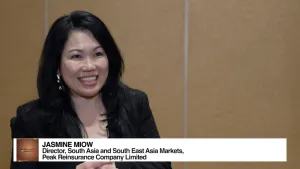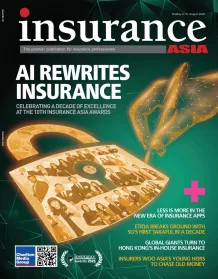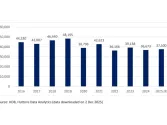Meeting evolving needs: How innovation will continue to drive insurance growth in 2025
By Harpreet BindraThe industry is projected to continue a growth momentum this year.
The role of insurance is changing – it has been for some time now. Once seen as a complex and somewhat rigid financial instrument primarily designed to protect against financial loss, insurance today serves a broader, more dynamic purpose. It now plays a central role in comprehensive financial planning, helping individuals build and preserve wealth, plan for retirement, manage tax efficiency, and prepare for long-term legacy goals.
Product innovation has been pivotal in reshaping what insurance can offer. And innovation is driven by the needs and preferences of those it serves.
Nowhere is this more visible than in Singapore, a nation where health and wealth needs are evolving at remarkable pace. Despite being a matured market with over 20 insurers serving its residents, Singapore’s weighted premiums surged 27% to $2.1bn in the first half of 2024 alone – with growth projected to continue into 2025.
This growth is fuelled by several key factors, including a rising influx of wealth, a growing mass affluent demographic, ongoing protection gaps, and an ageing population—all of which are creating demand for innovative insurance products that can address evolving needs.
Bridging protection gaps
Despite Singapore's status as a mature insurance market and affluent society, it faces one of the highest protection gaps in Asia. The 2022 Protection Gap Study by the Life Insurance Association Singapore revealed a significant $250b mortality protection gap and a $450b critical illness (CI) protection gap. This means that, on average, economically active individuals are underinsured by $100,000 for mortality coverage and $200,000 when it comes to covering their critical illness needs.
Rising living costs and higher standards of living have kept the mortality gap unchanged for years, whilst awareness around CI coverage has only recently narrowed the gap. As a result, there is both a need and an opportunity for insurers to bridge these gaps by developing accessible products that empower individuals to safeguard their financial futures. Innovative features like multiplier benefits, embedded death benefits and early critical illness riders are some ways that customers can expand their coverage without taking on multiple policies and making personalised choices that meet their specific needs.
Addressing retirement planning
According to last year’s Population in Brief report, one in four Singaporeans will be over the age of 65 by 2030. And many will face the challenge of ensuring they have enough to sustain themselves throughout their retirement.
A recent report revealed that one in three mass-affluent Singaporeans lacks a comprehensive retirement plan, relying on personal savings as their primary source of wealth.
To address these concerns, there is need for innovative solutions that bridge the gap between immediate financial needs and long-term retirement aspirations. Investment-linked insurance plans, along with flexible payout options, have already gained popularity as tools for building retirement savings. Tailored retirement solutions that account for longer life expectancies and evolving financial goals will further give individuals peace of mind as they plan for their future.
Beyond product offerings, however, there is also a need for insurers to educate their customers on the importance of early retirement planning, acting as trusted partners who can help customers build long-term financial resilience through proactive, needs-driven solutions.
Elevating wealth solutions for high-net-worth customers
In addition to serving the mass and mass affluent market, insurers also have the opportunity to address the unique needs of high-net-worth (HNW) individuals in Singapore. For example, according to McKinsey & Company, HNW individuals in Asia are set to transfer an estimated $5.8t in assets to the next generation by 2030, driving demand for legacy and estate planning solutions.
For this demographic, insurance must evolve beyond its traditional protective role to become a strategic component of overall wealth planning. Insurance can act as a “balancing factor” for distributing indivisible assets, providing tax-efficient liquidity during unexpected events, and even supporting philanthropic goals through charitable trusts or funding educational and healthcare institutions.
Additionally, there is a growing demand for solutions that balance legacy planning with wealth accumulation, particularly amongst younger HNW individuals. This shift in preference has led to the rise of products like Indexed Universal Life (IUL) insurance, which combines traditional benefits with market-linked growth potential. Insurers who adapt to these preferences can build enduring partnerships with clients as they navigate wealth transitions.
Delivering tangible value
Several emerging trends further underscore the need for innovation in the insurance space. One notable example is the rise of embedded insurance—products that are seamlessly integrated into customers' everyday financial interactions, such as credit card-linked personal accident coverage or mortgage-integrated term protection. These solutions are making insurance more accessible and relevant, driving higher adoption rates.
Ultimately, needs-based innovation is more than a commercial focus; it’s a commitment to delivering tangible value through tailored products, balanced engagement models and seamless integration into customers' lives. As we enter 2025, embracing this ethos will not only help insurers succeed in Singapore’s dynamic market, but foster win-win relationships with their customers that are built on trust.




















 Advertise
Advertise






